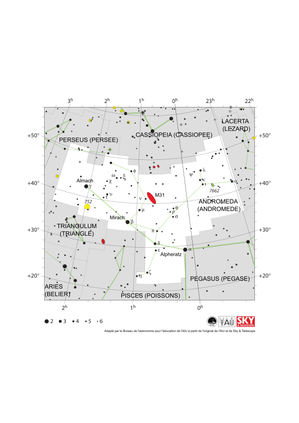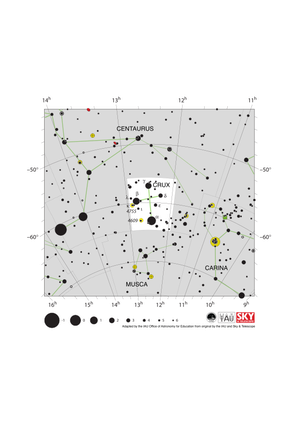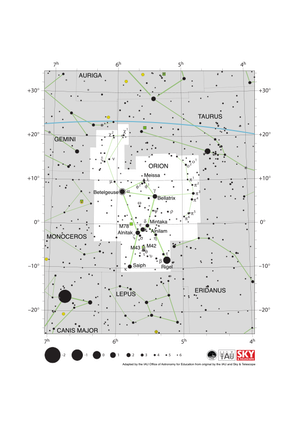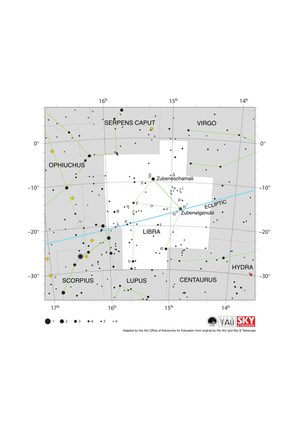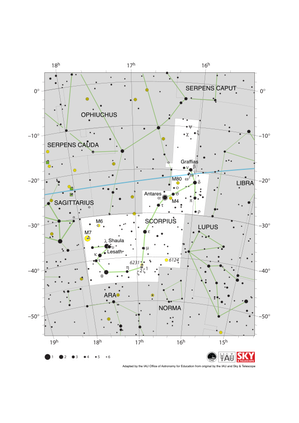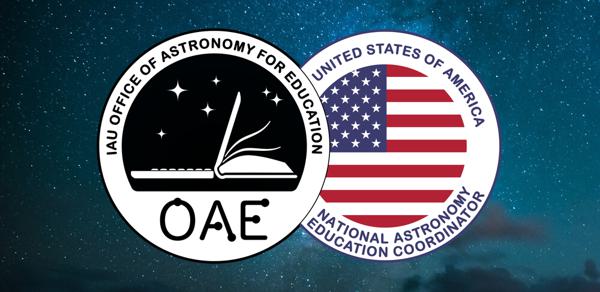Glossary term: Ascension droite (AD)
Description: L'ascension droite est l'une des deux coordonnées du système de coordonnées équatoriales (l'autre étant la déclinaison), que les astronomes utilisent pour définir les positions des objets célestes dans le ciel. Vues de la Terre, les différentes positions dans le ciel forment ensemble ce qui semble être une sphère lointaine avec la Terre en son centre. Les points du ciel situés directement au-dessus de l'équateur terrestre forment l'équateur céleste sur cette sphère. Le point situé directement au-dessus du pôle Nord géographique de la Terre est le pôle Nord céleste, et celui situé au-dessus du pôle Sud de la Terre est le pôle Sud céleste. Tout comme les géographes définissent la longitude et la latitude géographiques à la surface de la Terre, on peut définir la longitude et la latitude sur la sphère céleste. Si l'on choisissait la coordonnée de longitude d'un objet céleste comme étant celle de l'endroit de la Terre situé juste en dessous, la valeur de la coordonnée d'une étoile changerait au fil du temps, au fur et à mesure que la Terre tournerait. Au lieu de cela, les coordonnées équatoriales mesurent l'ascension droite comme une forme de longitude céleste par rapport à un "méridien" dans le ciel qui ne tourne pas avec la Terre, mais qui est fixe par rapport aux étoiles. Ce méridien, analogue au méridien de Greenwich sur Terre, est défini par son intersection avec l'équateur céleste : Au point exact où la trajectoire apparente du Soleil traverse l'équateur céleste de l'hémisphère céleste sud à l'hémisphère céleste nord. Cette longitude est appelée ascension droite. Sa valeur augmente vers l'est. Si vous regardez vers l'équateur céleste, les valeurs de longitude passeront devant vous en 24 heures (environ). C'est pourquoi l'ascension droite est généralement indiquée comme une valeur temporelle, 24 heures correspondant aux 360 degrés. La déclinaison, deuxième coordonnée équatoriale, correspond à la latitude géographique. Une légère oscillation de l'axe de rotation de la Terre, connue sous le nom de précession, fait que le système de coordonnées équatoriales, et donc l'ascension droite et la déclinaison des étoiles et autres objets célestes, changent au fil du temps, mais seulement très légèrement et très lentement.
Related Terms:
See this term in other languages
Term and definition status: The original definition of this term in English have been approved by a research astronomer and a teacher The translation of this term and its definition have been approved by a research astronomer and a teacher
The OAE Multilingual Glossary is a project of the IAU Office of Astronomy for Education (OAE) in collaboration with the IAU Office of Astronomy Outreach (OAO). The terms and definitions were chosen, written and reviewed by a collective effort from the OAE, the OAE Centers and Nodes, the OAE National Astronomy Education Coordinators (NAECs) and other volunteers. You can find a full list of credits here. All glossary terms and their definitions are released under a Creative Commons CC BY-4.0 license and should be credited to "IAU OAE".
If you notice a factual or translation error in this glossary term or definition then please get in touch.
Related Diagrams
Carte de la constellation d'Andromède
Credit: Adapté par le Bureau de l'astronomie pour l'éducation de l'AIU à partir de l'original de l'AIU/Sky & Telescope
License: CC-BY-4.0 Creative Commons Attribution 4.0 International (CC BY 4.0) icons
Crux Constellation Map
Credit: Adapted by the IAU Office of Astronomy for Education from the original by IAU/Sky & Telescope.
License: CC-BY-4.0 Creative Commons Attribution 4.0 International (CC BY 4.0) icons
Orion Constellation Map
Credit: Adapted by the IAU Office of Astronomy for Education from the original by IAU/Sky & Telescope
License: CC-BY-4.0 Creative Commons Attribution 4.0 International (CC BY 4.0) icons
Libra Constellation Map
Credit: Adapted by the IAU Office of Astronomy for Education from the original by IAU/Sky & Telescope
License: CC-BY-4.0 Creative Commons Attribution 4.0 International (CC BY 4.0) icons
Scorpius Constellation Map
Credit: Adapted by the IAU Office of Astronomy for Education from the original by IAU/Sky & Telescope
License: CC-BY-4.0 Creative Commons Attribution 4.0 International (CC BY 4.0) icons
